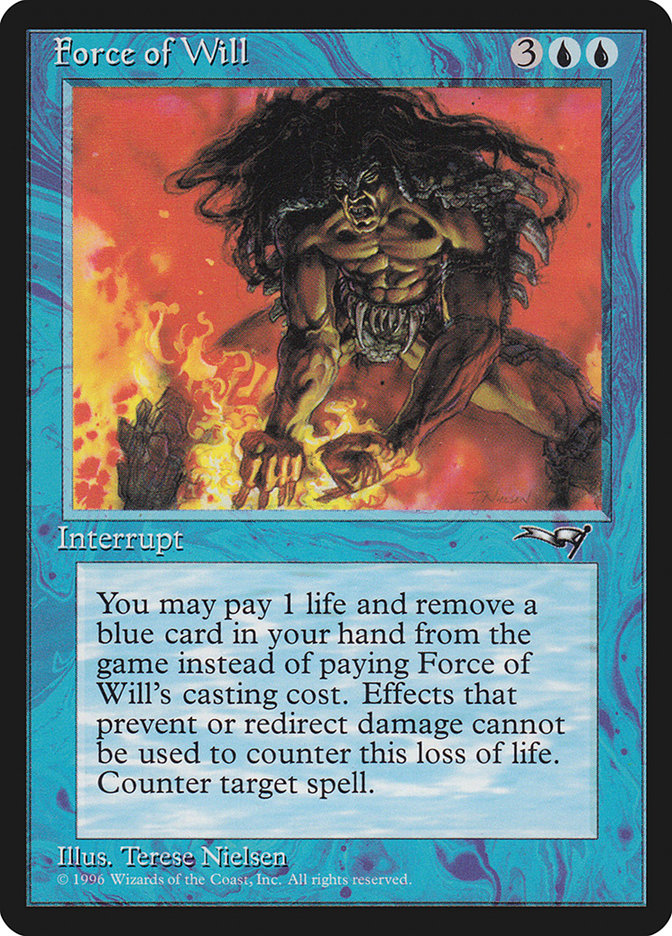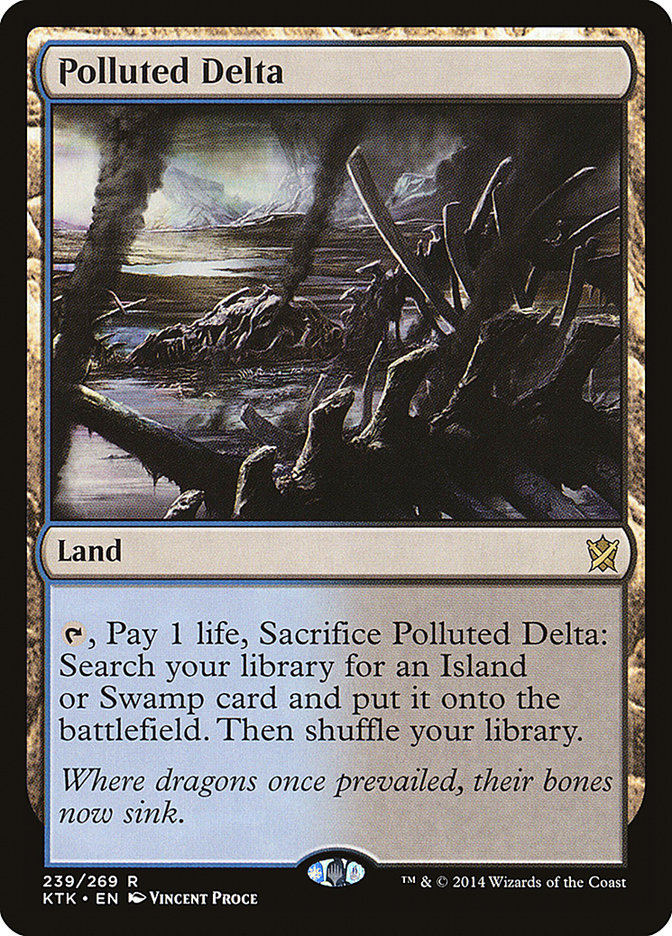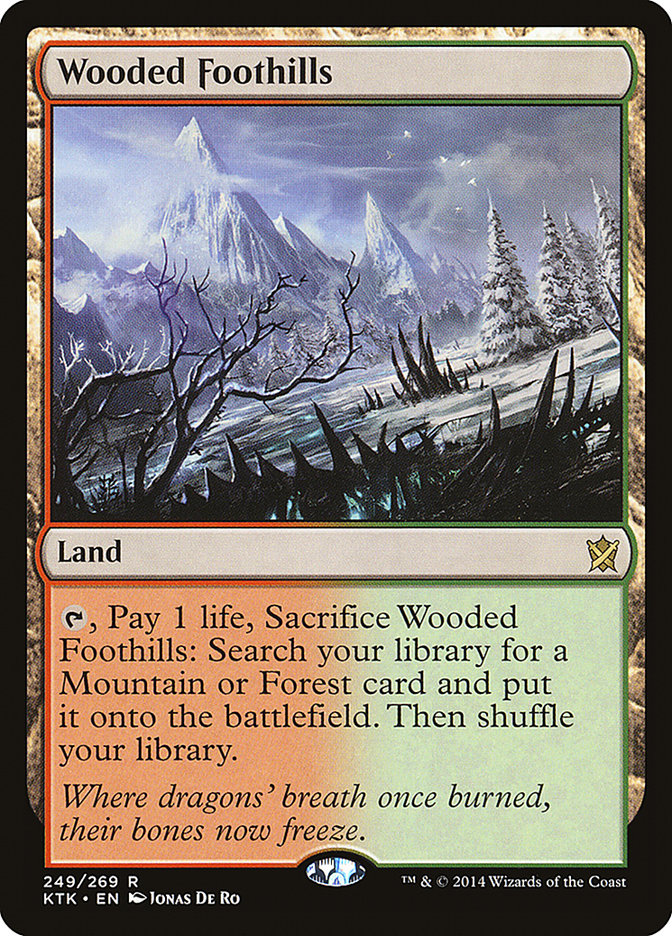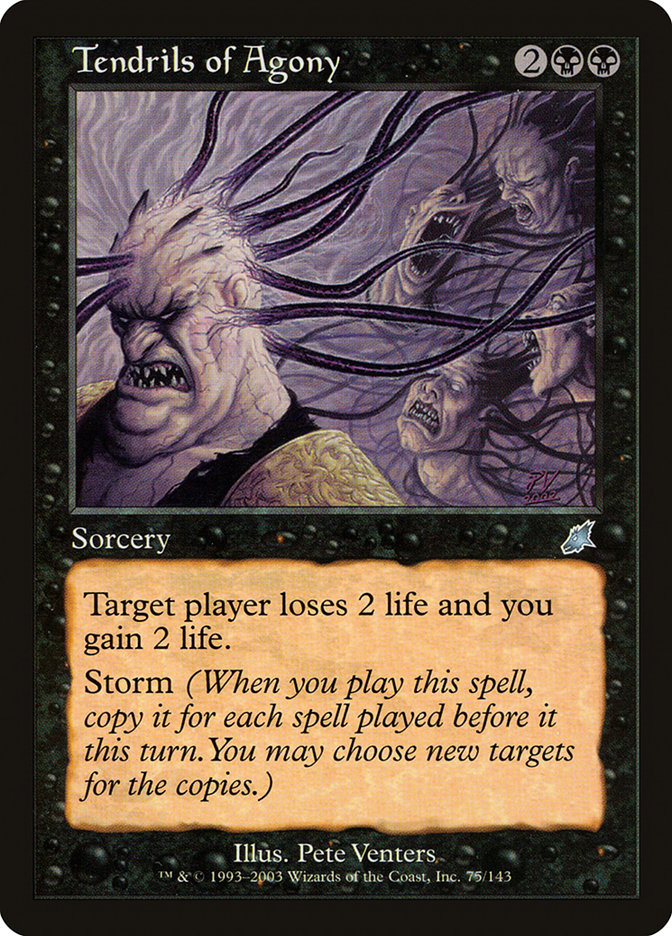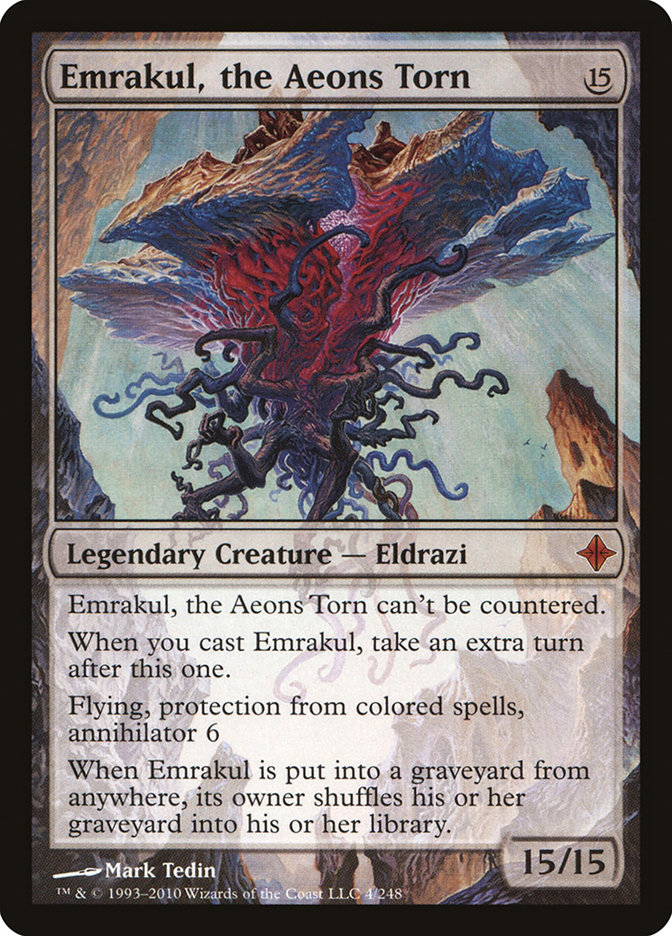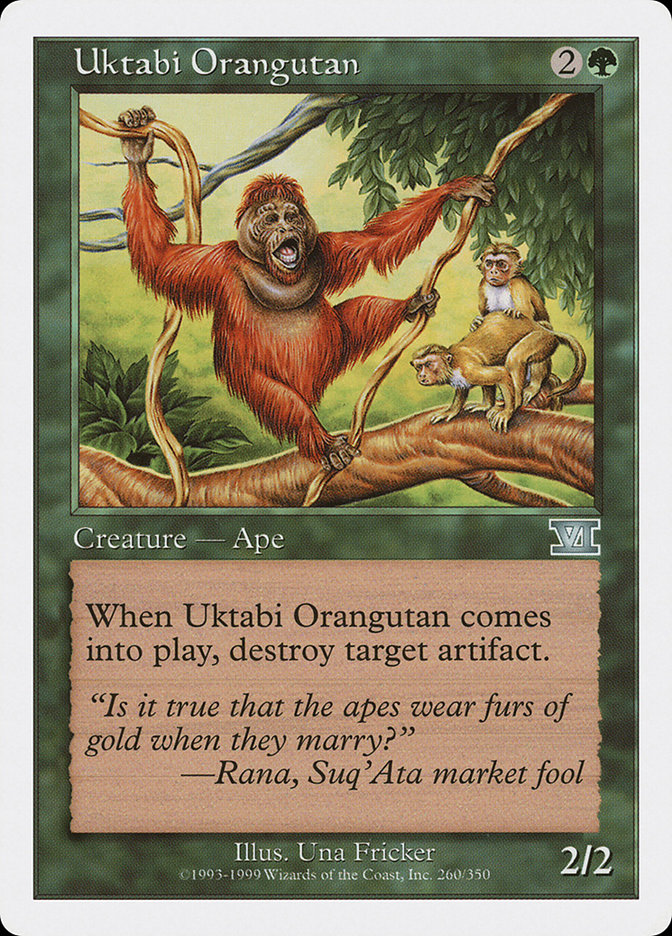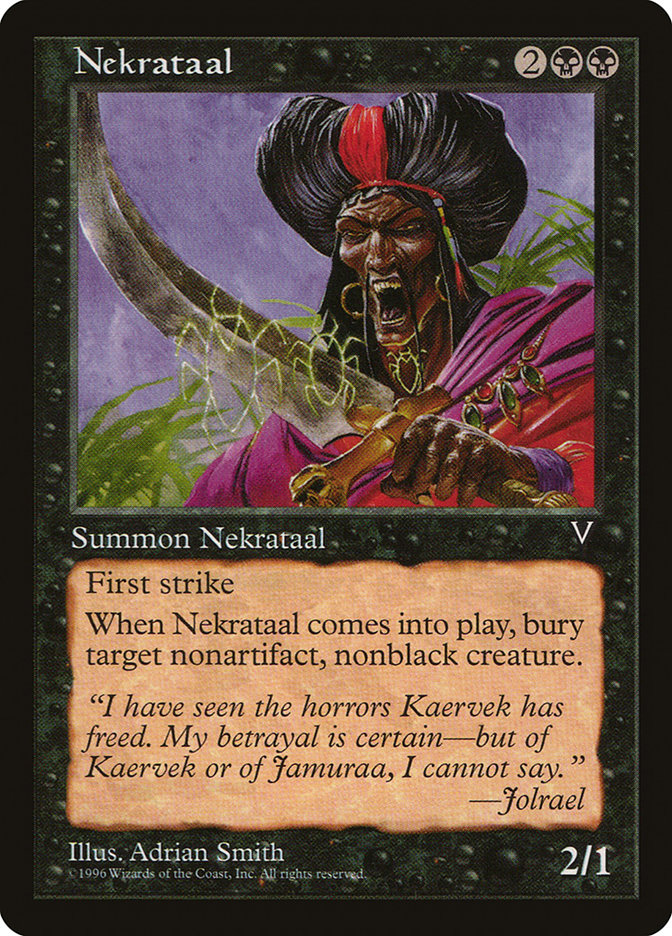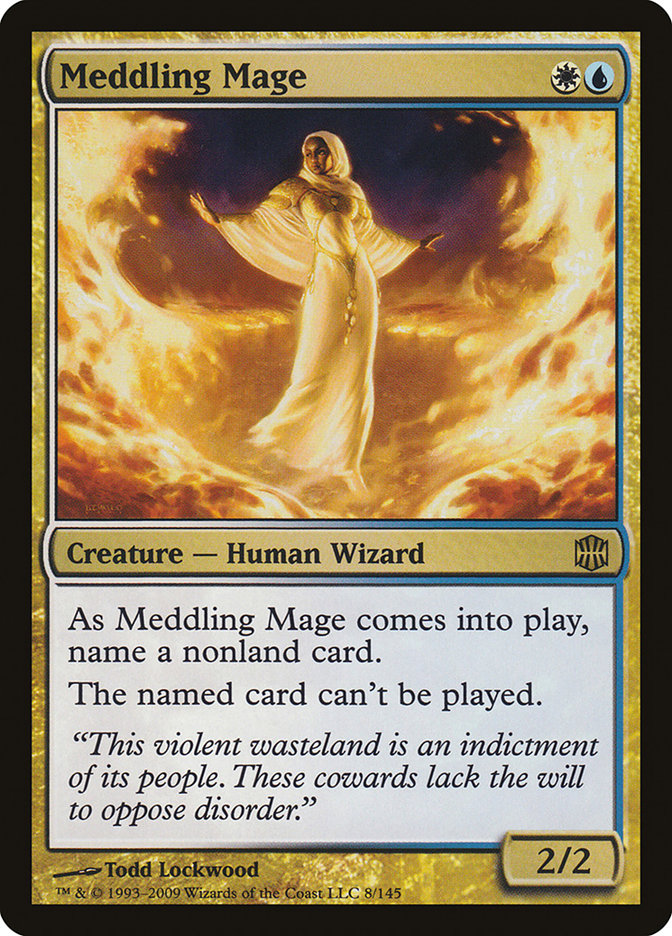Maybe it’s because I’m getting old or maybe I’ve just been playing this game for too long, but from time to time I start thinking about Magic’s history and
how the game has developed overall. My history piece about the three most important decks ever built was a
big success – somewhat unexpectedly to me, in all honesty, as I wasn’t sure if many of you enjoyed looking at the foundations on which our current
understanding rests as much as I do – so hopefully you’ll enjoy today’s look at the most impactful printings reshaping Magic gameplay over the years.
Note, these aren’t cards that are necessarily broken or in some cases even top tier playables in the Eternal formats at this point. I’m more interested in
cards that changed the ways Magic works on a fundamental level, cards that revolutionized the value of certain play patterns or even made them possible in
the first place, and cards that taught WotC new ways to craft cards for us to play with.
I’m also excluding cards from Alpha and Beta here because, well, clearly the whole sets where the most important printings ever because they
brought the game into existence in the first place. However, the cards I’m going for are ones that changed the nature of Magic gameplay and design forever,
not ones that made their existence possible in the first place.
Shedding Water
Let’s start with a big one as far as lasting impact is concerned. Force of Will makes this list as possibly the actual most important card in all of the
Eternal formats, period. It’s often characterized as the glue that holds the Eternal formats together, and it very definitely does that as we’d likely have
to ban Legacy into unrecognizability without it, and Vintage would likely cease to be a remotely playable format without the free interaction made possible
by Force of Will existing. For Legacy in particular, the threat alone of Force of Will existing is even more important than actually having it in hand, as
that’s what keeps turn 1 win decks like Belcher and Oops, All Spells! from being played in significant numbers (the fact that you have to prepare to be
interacted with forces combo decks to slow down and incorporate their own disruption).
While these accomplishments might earn Force of Will a spot on this all by their lonesome, the really important thing to remember here is that Force of
Will, in addition to being one of the most important forces (sorry, couldn’t resist) in the game all by its lonesome, also serves as the poster child for
the full Alliances pitch cycle – the original inspiration for every single non-mana cost to pay mechanic/cycle WotC has printed over the years.
That
‘s the real watershed happening here. Beforehand, turns were somewhat easy to calculate in Magic. If your opponent was tapped out, they simply
were out of options to interact with you, and the amount of mana they left untapped was a clear indicator of their maximum ability to interact. No mana
meant you were simply goldfishing this turn. By introducing non-mana ways to pay for spells to the game, WotC changed this utterly fundamental dynamic,
allowing players to threaten interaction at almost any point in the game they had at least some semblance of resources available to work with, adding a
vast amount of gameplay and bluffing opportunities to Magic.
Free spells do two things. They allow us to act unconstrained by the usual pressures created through mana constraints, and they allow their caster to get
significantly ahead on tempo at the cost of some other resource (the blue card we’re pitching to Force of Will has basically turned into a Black Lotus,
after all, what with Counterspell’s effect costing three mana these days). Both of these things are very powerful indeed, so it shouldn’t be surprising
that an extraordinary percentage of these alternative cost spells have seen Constructed play in some form, often as a key player or enabler if proactive
free spells are involved (Invigorate for Infect, Gush for Grow strategies, Blazing Shoal in Modern Infect). WotC revisits these kinds of mechanics with
regularity ever since they first implemented the concept.
If there’s anything that’s more important to the Eternal formats than the existence of Force of Will, it’s the fetchlands. It took us a little while to
figure out what the combination of fetchlands and old school dual lands meant for Eternal format manabases moving forward when Onslaught first introduced
them, but they’ve changed Eternal Magic like nothing before or after them.
First and foremost, fetchlands enable the existence of perfect mana for almost any combination of colors you might want to play without having to pay any
major costs when constructing your manabase. It’s hard to overvalue the impact of such a thing. Before Onslaught brought us fetchlands, we regularly had
City of Brass in our Vintage control decks, and even just wanting consistent access to two colors often forced you to play a number of lands you’d rather
not have in your deck (such as Gemstone Mine, painlands, or the Mirage tap-fetches). Today, Legacy and Vintage allow you to play any four-color and below
combination with essentially the same consistency a mono-color deck could bring to the table all at the cost of a couple of life per game.
The advent of fetchlands also was a huge step towards reigning in non-basic hate. Preceding the fetches, all non-basic manabases were actually quite common
(as mentioned, correctly fixing your colors was pretty tough) so playing around Wasteland, Back to Basics, or Blood Moon simply wasn’t possible for a wide
variety of decks. Blood Moon and Back to Basics commonly actually said “win the game” on them, especially because having a small number of basic lands in
your deck did essentially nothing to fight back because there was no way to find them when you expected the threat of non-basic hate, and having more than
a few in a deck with three-plus colors made it so that you’d be able to cast your spells about as consistently as a three-color Limited deck (aka not an
option for Constructed).
Aside from their impact on manabases working as intended, fetchlands have a second very important effect: they serve as enablers all by themselves. The
fact that they go to the graveyard helps fuel cards like Life from the Loam and all of the delve spells, but their most important enabling function comes
from allowing players to shuffle their deck almost at will. Before the fetchlands, Brainstorm was considered a crap common by a lot of people and
rightfully so. If you can’t get rid of the cards you put back, Brainstorm is actually a pretty terrible card. Brainstorm isn’t the only thing that gets
powered up. Sensei’s Divining Top, Sylvan Library, Ponder, and basically anything that allows you to fiddle with the top cards of your library gains an
incredible amount of value when your manabase allows you to shuffle at will.
I mentioned the importance of Force of Will as early, powerful interaction in the Eternal formats before, and Duress represents the point when WotC figured
out how to make powerful earlygame disruption that relied on skill instead of variance. I know I could mention Coercion here, but that card was simply too
slow to really make an impact. By figuring out that limiting the choices on discard spells allowed them to shave down on mana cost in a major way, WotC
allowed for disruption that could actually compete with countermagic as a defensive or offensive tool to become a thing.
There’s a reason Thoughtseize essentially plays the role of Force of Will in Modern – the disruption spell that enables all of the fair decks to compete
with the unfair ones – and that it, Inquisition of Kozilek, Cabal Therapy, and the original Duress are all key players in Legacy. Once formats reach a
certain power level, it becomes necessary to be able to efficiently stop your opponent from implementing their plan, as otherwise you’re liable to end up
dead very rapidly, and figuring out the correct way to configure skill-testing earlygame disruption outside of blue allowed WotC to massively open up which
color combinations could meaningfully participate in a game of Eternal Magic.
Most of those among you that started playing after Scourge happened probably don’t even realize how much of a revolution the printing of the storm spells
caused. You see, the existence of a reasonably low requirement storm spell that can end the game completely changes the nature of combo decks, engine combo
decks in particular.
Before Scourge, combo decks used their broken mana acceleration and card drawing to either assemble a straight up two-card combo to win (Illusions of
Grandeur and Donate being particularly popular) or had to assemble some wild contraption to push their ability to convert resources over the top to fuel
some high cost win condition (Mind Over Matter untapping Tolarian Academy and Mana Vault to fuel a lethal Stroke of Genius being a common favorite).
With Tendrils of Agony and Brain Freeze available, on the other hand, the only thing that still matters is being able to chain spells until you have a
negligible amount of mana (2BB or 1U) available. What that means is that you don’t actually need any kind of weird contraption, just things you already
want to be playing (mana acceleration and cheap card drawing) to enable you to actually end the game. As a result, storm spells allow us to build
essentially the holy grail of perfect combo deck construction: a deck that uses the absolute minimum number of cards slots (one) on things that only serve
to kill the opponent.
It’s possible Progenitus or maybe even Darksteel Colossus should be the entry here (because of Natural Order and Tinker, respectively) instead of Emrakul.
Still, the watershed moment I’m looking for here is the point when WotC went over the edge with high cost permanents that were only balanced by their
casting cost (which in turn break cheating mechanisms such as Oath of Druids, Reanimate, and Show and Tell wide open), and to me, Emrakul is the first card
that truly felt like it made these effects absurd instead of just powerful. Before Emrakul, anything you cheated into play was either conditionally broken
or took a couple of turns to decide the game. With Emrakul generally deciding things in a single swing and immune to most forms of interaction
that could deal with it after it gets deployed, cheat-a-fatty decks suddenly evolved from fake combo decks that could do something powerful but not
necessarily game-ending to a state of existence where getting your cheat off usually just ends the game in short order.
Today we have even more stupid high cost finishers to cheat in, ones that often decide the game on the spot once they hit (such as Griselbrand,
Omniscience, and Craterhoof Behemoth), but Emrakul and its nigh-inevitable attack for the board clear are where the whole trend started. Luckily, WotC
seems to have realized that these kinds of cards don’t exactly make for enjoyable gameplay – they’re either too expensive to put in your deck or lead to
massive blow out games when deployed on the cheap – seeing how the last one was printed more than two years ago at this point.
These three Visions cards have likely done more to lead to modern card design than almost anything else on this list. What this revolutionary trio* –
affectionately called 187s by players at the time – taught WotC is how to make creatures just as good or better than spells: by turning them into spells
with a body. As a result of how popular these cards were and how much design space for creatures it opens up, Magic is so full of creatures with
enters-the-battlefield abilities today that it’s hard to imagine there was a time when creatures were mainly cards you included in your deck to end the
game. Uktabi Orangutan and friends were the trailblazers for this major part of modern card design and gameplay, and without them Magic would be a very
different game today.
*I just have to include a shoutout to Pyknite, the original Elvish Visionary. Putting a slow-trip effect on a creature was as far as I know the first actual use of EtB abilities, but the card unsurprisingly wasn’t good enough to make any waves, so I can’t consider the old Pyknite the watershed
moment, but he is the true first if you that’s what you’re looking for.
Tarmogoyf earns its spot on the list as the point where we finally entered the era of modern power/toughness power creep on creatures. There’s a reason
Tarmogoyf turned up in basically every type of deck from dedicated aggro through midrange and control strategies at the time. Its mana to stats ratio was
simply absurd compared to what creatures were supposed to look like at the time.
I personally was happier when creatures like Werebear, Quirion Dryad, and Psychatog represented the top end of absurd stats in Constructed Magic, but
there’s no denying that Tarmogoyf set the new standard for what was acceptable and that its legacy defines how good creatures are allowed to be in modern
Magic. Stoneforge Mystic (with her partner in crime Batterskull), Knight of the Reliquary, Tasigur, the Golden Fang, Delver of Secrets – how much power you
get per mana has changed a lot since Tarmogoyf showed WotC what they could do without breaking the game. I mean, there’s a reason you almost never see
old-frame creatures on a Legacy battlefield unless you’re watching a tribal deck, and Tarmogoyf is where it all started.
I mentioned how important Duress was in making discard the disruptive force to be reckoned with it is today, and Meddling Mage as the grandfather of the
modern hate bear is every bit as important. Chris Pikula’s Invitational card wasn’t the first small creature designed to be disruptive, but it’s the first
one to see major tournament play and the first one that follows the hugely successful pattern of combining a just good enough 2/2 body for two mana with a
strong disruptive ability that on first sight would seem more at home on an enchantment.
It took quite some time for WotC to finally start truly exploring how far the “efficient body with enchantment-like disruptive ability” could be pushed and
create modern maindeck powerhouses like Thalia, Guardian of Thraben, Eidolon of the Great Revel, Phyrexian Revoker, and Gaddock Teeg or sideboard bombs
like Ethersworn Canonist and Containment Priest – there are quite a few sets between Planeshift and Lowryn, after all. Since they’ve started, however, the
ability of non-blue non-black decks to actually participate in an Eternal game – instead of just hoping to goldfish faster – has increased exponentially,
and their matchups against the so-called unfair decks have become a lot less lopsided and, frankly, boring now that they actually have maindeck worthy
tools of interaction.
That’s Eight
There you have it, what I consider to likely be the most important printings in Magic history as far as changing the nature of the game and long-term
influence are concerned. One little detail I want to share before closing things for today is that I didn’t actually set out to make this a top 8 – in
fact, I was planning for a nice round decimal system ten – but once I had finished thinking things over, these eight seemed to stand largely on their own
in my mind. What I want to ask you guys then is: did I overlook something? Are there any other cards that have had this kind of lasting impact on the
Eternal formats, common Magic play patterns, and such a remarkable influence as inspirations for future design? I obviously haven’t come up with any,
otherwise they’d be in here – I briefly considered mentioning all the high number Dredge cards because of how they enable us to play such a different game
while still using Magic cards but dismissed them because their impact is limited to essentially a single archetype – but I’d love to know if there’s
something I missed!

